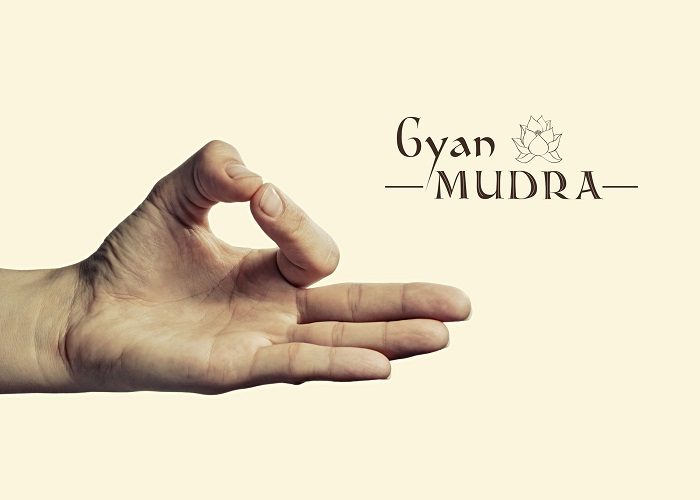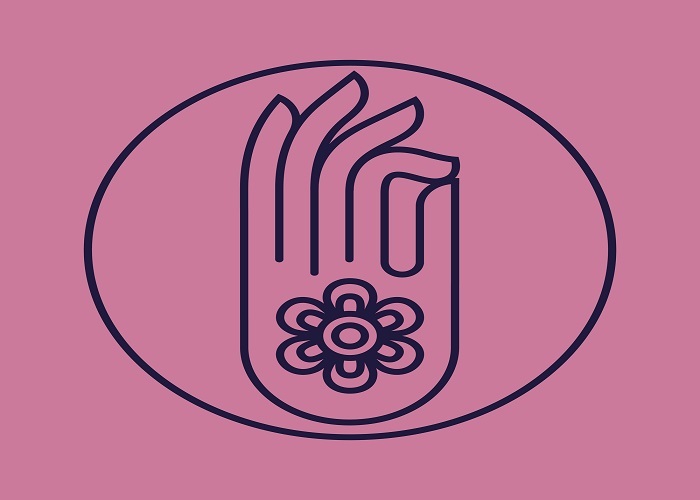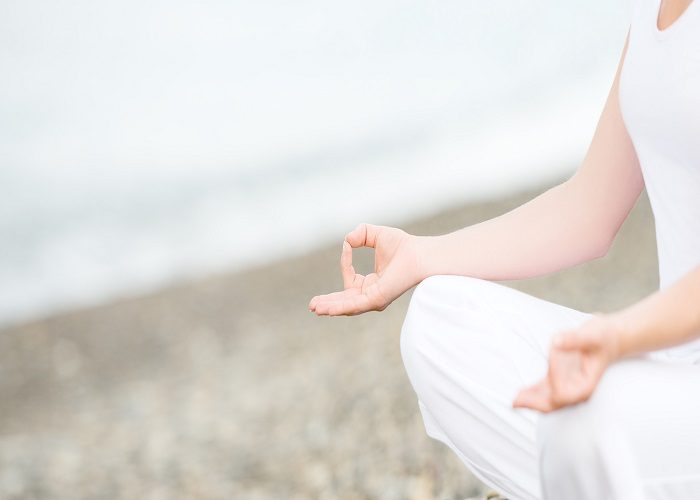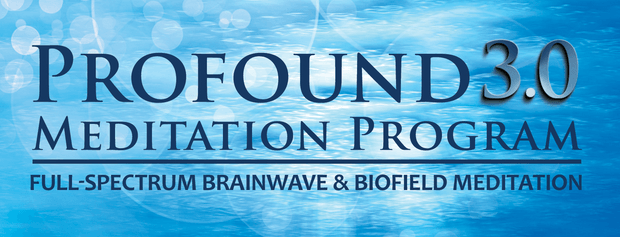
When we think of meditation practice, we often consider the way the body is seated or resting.
Lotus pose often comes to mind, or perhaps we visualize a practitioner resting on their heels in diamond pose.
The seated position we come into tends to be a focal point of preparing for meditation.
However, after taking a seat the question remains: what do we do with our hands?
Hand mudras, or gestures, are symbolic and energetically-determined positions of the hands taken during meditation or prayer.
Gyan mudra is one of the gestures most commonly associated with meditation.
When we visualize a practitioner seated in lotus pose with thumb and finger connected, we’re consciously or unconsciously imagining their hands in gyan mudra.
Let’s take a closer look at what a mudra is, what gyan mudra looks like, and what the benefits of this particular gesture might be.
What is a Mudra?
We now know that a mudra is a gesture or ‘seal’.
But where did they come from and why are mudras practiced?
The history of mudras is multi-faceted, with roots extending back to ancient tantric rituals, Buddhism, Hinduism, Taoism, ancient Egypt, and many other traditions.
The purpose of these gestures depends largely upon where the specific mudra comes from.
Today, one of the most common uses of mudras is in yoga and meditation.
When we consider the history of these practices, we uncover the energetic systems that are believed to underlie these hand gestures.
In yogic traditions, it is said that each finger corresponds to an element. So, when various fingers are connected, certain elements within the body are stimulated or suppressed. This directs the flow of energy through the body and into the brain.
The elements that each finger corresponds to are:
- Thumb – fire
- Index finger – air
- Middle finger – ether
- Ring finger – earth
- Smallest finger – water
As we get to know the different mudras, we can use them in yoga and meditation to suit our goals and needs of the present moment.
If we require grounding, we might seek out a mudra that helps to promote the earth element.
On the other hand, if we yearn for increased energy and connection to a higher consciousness, we’ll look for one that stimulates the air element – a gesture such as gyan mudra.
What is Gyan Mudra?

Gyan mudra, as briefly described, is a hand gesture that involves connection of the thumb and the index finger.
The remaining three fingers of each hand are held out straight though relaxed, and the backs of the hands rest on the knees.
This gesture is sometimes referred to as chin mudra, though many practitioners say that chin mudra requires the palms to be facing down.
It is also important to note that in addition to the elements associated with each finger, the thumb and index finger have deeper meanings.
In gyan mudra, the thumb corresponds with universal consciousness and the index finger with individual consciousness.
This leads us into a deeper understanding of the gyan mudra meaning: gyan mudra is the consciousness gesture, or the mudra of knowledge.
By connecting these two symbolic and energetic fingers, the air element is stimulated and spiritual awareness is increased.
Gyan Mudra Benefits

The benefits of gyan mudra come from its energetic properties.
This gesture stimulates the root chakra, increasing the air element and helping to clear any energetic stagnation.
Since the thumb represents fire and the index finger represents air, this mudra helps to stimulate more dynamic energies.
Due to the way it is said that energy flows through the hands and body during practice of this mudra, some of the benefits associated with this hand gesture include:
- Reduced heaviness and increased energy
This mudra is particularly beneficial for those with excess kapha energy. Kapha, associated with the earth element, is responsible for our feelings of safety, security, and connection with the earth. These are all wonderful traits, but when kapha is in excess, we might struggle with heaviness, lethargy, and depression. Since gyan mudra is said to stimulate vata (or light, airy energies), this mudra can help us to awaken the vital life force that lives within us.
- Clarity of mind and balance of the nervous system
Again, since this mudra stimulates the air element, it may be beneficial in clearing and calming the mind and enhancing creativity, concentration, and memory. It is also said to help balance the pituitary gland and the nervous system, improving our sympathetic and parasympathetic responses.
- Greater inner wisdom and connection to higher consciousness
When practiced regularly and for longer periods of time, this mudra is believed to help enhance our inner wisdom. Since the thumb is associated with universal consciousness and the index finger with individual consciousness, we might consider that this mudra bridges the gap between the two.
Like any practice, gyan mudra is most powerful when practiced with complimentary modalities.
Results take time and vary from person to person.
How Gyan Mudra Works
As briefly mentioned, gyan mudra works by directing the flow of energy through the body.
We each carry some combination of the five elements (fire, air, ether, earth, and water) and our wellbeing is dependent on how balanced these are.
An excess or deficiency in any element can lead to imbalance.
For instance, an excess of earth energy can have us feeling fearful, lethargic, or depressed.
An excess of fire energy can lead to unhealthy expressions of anger, jealousy, or competitiveness.
Balancing the elements within us can be done in a variety of ways.
Mudras are one way we help to direct the flow of what is already within us.
From a physiological perspective, mudras stimulate energy points (or nerves) that send signals to the brain.
In gyan mudra, the connection between the thumb and index finger creates a loop that sends energy back up to the brain.
This is part of how the mudra is believed to improve concentration, memory, and other brain functions.
Gyan Mudra Side Effects
While practicing this mudra is generally considered safe, there are times when we might want to explore it in moderation or even veer towards a different mudra.
What might be a benefit for one person could be an unwanted side effect for another, so it is important to take the time to listen to what your body is asking for.
Since gyan mudra increases the presence of air in the body, it is not ideal for those with an excess of vata energy.
If you have a vata constitution, you might still feel comfortable practicing this mudra; however, explore it in moderation.
For those that are feeling ungrounded, disconnected from their physical reality, or otherwise too ‘airy’, a grounding mudra is likely better suited.
The best way to know whether gyan mudra will be of benefit or detriment to you is to listen to your body and to take your time.
Shifting energy patterns is a slow and subtle process, so you have time to listen.
As you practice, continue to check in with how you are feeling:
Is the practice making you feel safe and secure? Inspired and alive?
Or is it making you feel anxious, unsettled, or uncomfortable in any other way?
Listen to your inner compass and allow your practice to grow and change as your needs do.
How to Practice Gyan Mudra

Practicing gyan mudra requires more than just a few pointers on where to place our hands and fingers.
It requires patience, presence, and mindfulness.
If you’re wondering when to do gyan mudra, the answer is that it’s really up to you.
With that said, many practitioners suggest that first thing in the morning is the best time for this practice.
Alternatively, you might practice for short sessions of 10 minutes a few times per day.
Though there are various ways to use gyan mudra, this is one contemplative meditation that might help you to connect with what this mudra offers:
1. Take some time to come into a comfortable seated position. If you are an advanced meditation practitioner, you might come to lotus pose. If this is out of reach for you, take a seated position with one heel drawn into your body and the other resting just on top or in front of it. If you need to sit on a cushion or chair to make this more comfortable, feel free to make that adjustment.
2. Straighten the back and soften the shoulders. Your neck should form one straight line with the spine. When you are settled, gently close your eyes.
3. You might like to take a few moments to settle in by grounding yourself through the breath. When you are ready, place the back side of your hands on each corresponding knee or thigh (depending upon your seated posture of choice).
4. Now, bring the tip of each thumb to meet the end of the index finger beside it. Extend the other fingers without force or rigidity.
5. Take a few deep breaths to settle even further into this space. For a few breath cycles, witness the air flowing up and down the length of the spine. Let your breath be slow and steady, calming and opening the mind.
6. You might practice a simple, straightforward meditation for the next 10 to 20 minutes (such as breath awareness or mantra meditation). Or, you might explore a more contemplative practice by either:
Bringing a question to your higher self. If there is an issue at hand that the mind is struggling with, see if you might raise it to a higher power. Open yourself to a deeper level of understanding by asking a question to the universal consciousness we are all a part of.
Meditating on the third eye or crown of your head. As you rest your attention on this point, repeat the affirmation: I am open to the higher wisdom within me. Be mindful of the thoughts, feelings, and beliefs that arise in the silent space between each repetition.
7. Regardless of the path you choose, spend 10 to 20 minutes here. Hold gyan mudra throughout, choosing the meditation practice that feels best suited for your needs in this moment.
8. When you are ready to come back into the world around you, return your attention to your breath for a few rounds. Then, become aware of the earth beneath you, the air around you, and the sounds that the fill the space you are in.
9. Once grounded back in this reality, gently open your eyes. Take as much time as you need to reflect on whatever you experienced during the meditation.
Allow this practice to grow and shift as you do.
Your gyan mudra meditation or yoga practice does not have to be fixed; it can (and will) look different from day to day.
No matter what your practice brings, remember to ground yourself assuredly and open-heartedly into the space you are in.
Then, let your mind open to all the higher possibilities and insights that are yet to reveal themselves.
You may also be interested in:
1. Surya Mudra
3. Yoga Poses For Beginners [Downward Facing Dog – Adho Mukha Svanasana]


